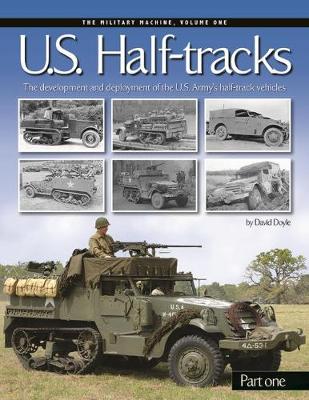The Military Machine
2 total works
A Visual History of the U.S. Army's WWII Tank Destroyer In late 1941 the concept of a separate tank destroyer force began to jell. This force would be armed with specialized weapons. While the army's primary antitank weapons of the late 1930s were 37mm towed anti-tank guns, these were soon deemed to be inadequate against enemy armor. Accordingly, the quest for larger weapons began, as did the desire for a self-propelled antitank gun, or Gun Motor Carriage. The initial efforts, which involved adapting 3/4-ton, Dodge trucks to mount antitank weapons (the M6, nee WC-55), which were intended as interim and training vehicles. Product Information: ISBN: 9781944367190 Author: David Doyle Publisher: The Ampersand Group Format: Paperback Pages: 128 Dimensions: 22 z 28 x 1cm.
The development and deployment of the U.S. Army's half-track vehicles The first title in the Military Machine series is U.S. Half-tracks. Written by noted vehicle historian David Doyle, This massive 456-page book covers all aspects of the half-track's development and use, from early concepts to its deployment across the globe in WWII. Extensive essays describe the M2 Scout Car, M2, M3, M5 and M9 series of vehicles in tremendous detail. The chapter structure of each type covers development, training and combat. This coverage features hundreds of the excellent U.S. Government "laboratory" photos, as well as photos taken during training in the United States. Featured locations include the Tennessee and Louisiana maneuvers and the Desert Training Center. Combat coverage of all types runs from North Africa, to Italy, to the ETO and the Pacific. Also included are extensive appendices, featuring detailed technical specifications, registration number data, Modification Work Order (MWO) illustrations, TO&E and detailed scale drawings of selected types. Rounding out this exquisite volume is a short color section that features period color photos, as well as period color advertisements by the half-track's various manufacturers. This lavishly illustrated volume contains over 850 images, many published here for the very first time.

